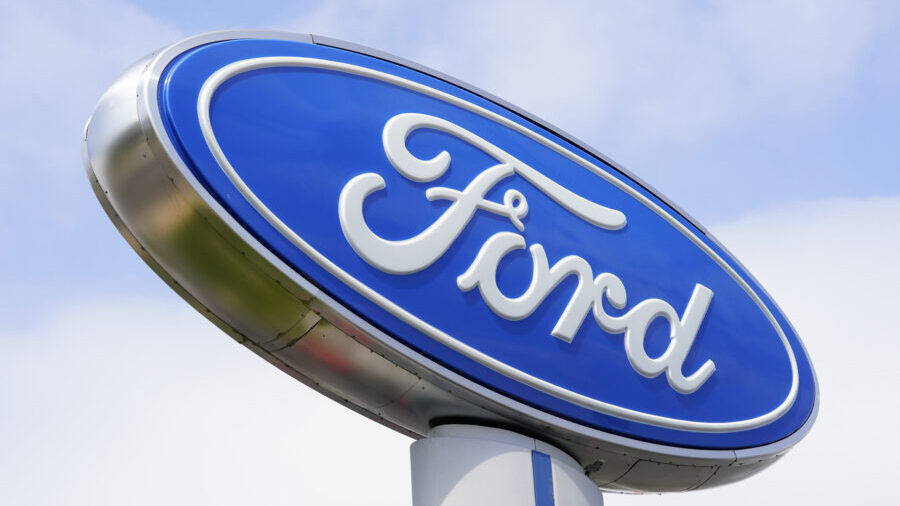Ford just reported a massive loss on every electric vehicle it sold
Apr 24, 2024, 4:02 PM | Updated: 4:05 pm

FILE - A Ford sign is shown at a dealership in Springfield, Pa., Tuesday, April 26, 2022. Ford’s electric vehicle unit reported that losses soared in the first quarter to $1.3 billion, or $132,000 for each of the 10,000 vehicles it sold in the first three months of the year, helping to drag down earnings for the company overall. (AP Photo/Matt Rourke)
(AP Photo/Matt Rourke)
(CNN) — Ford’s electric vehicle unit reported that losses soared in the first quarter to $1.3 billion, or $132,000 for each of the 10,000 vehicles it sold in the first three months of the year, helping to drag down earnings for the company overall.
Ford, like most automakers, has announced plans to shift from traditional gas-powered vehicles to EVs in coming years. But it is the only traditional automaker to break out results of its retail EV sales. And the results it reported Wednesday show another sign of the profit pressures on the EV business at Ford and other automakers.
The EV unit, which Ford calls Model e, sold 10,000 vehicles in the quarter, down 20% from the number it sold a year earlier. And its revenue plunged 84% to about $100 million, which Ford attributed mostly to price cuts for EVs across the industry. That resulted in the $1.3 billion loss before interest and taxes (EBIT), and the massive per-vehicle loss in the Model e unit.
A price war among EVs for about a year and a half has made profitability very difficult said Ford CFO John Lawler. He said while Ford has removed about $5,000 in cost on each Mustang Mach-E, “revenue is dropping faster than we can take out the cost.”
In 2023, Ford Model e reported a full-year EBIT loss of $4.7 billion on sales of 116,000 EVs, or an average of $40,525 per vehicle, just more than a third of the first quarter loss.
Model e doesn’t handle all of the company’s electric vehicle sales. Some are also sold in its Ford Pro unit, which handles fleet sales to businesses and government buyers. And Ford said it had strong demands for electric vehicle sales in that unit, including an order for 9,250 E-Transit vans from the US Postal Service, which are to be delivered through the end of this year, and an order for more than 1,000 of its F-150 Lightning pickups and Mustang Mach-E SUVs from Ecolab, a global sustainability company.
Despite the EV losses, Ford CEO Jim Farley said in a call with investors the company is making changes in its EV business, and that the company’s planned next generation of EVs will allow it to be profitable on that business in the near future.
Ford Pro, which primarily sells traditional internal combustion vehicles, was the primary profit driver for Ford in the quarter, posting EBIT of $3 billion, or more than double what it made a year ago, as revenue from the unit rose 36% to $18 billion. The number of vehicles sold by Ford Pro was up 21% to 409,000.
But Ford Blue, which handles sales of gasoline-powered cars to consumers, reported that sales fell 11% to 626,000, and revenue dropped 13% to $21 billion. That resulted in EBIT in those traditional sales falling by nearly two-thirds to $905 million.
Together Ford Blue and Ford Pro produced roughly the same level of profits as a year earlier, but the increased losses at the Model e unit meant that Ford’s overall net income fell 20% to $1.3 billion, while its adjusted earnings per share fell to 49 cents, down 21% from a year earlier, but slightly better than analyst forecasts of 44 cents a share.
Ford rival General Motors reported earlier this week that it remains on track to have its North American EV business turn profitable in the second half of this year, while Stellantis, which makes cars and trucks in North America under the Jeep, Ram, Dodge and Chrysler brands, said its European EV business was already profitable last year.
On Tuesday Tesla, the world’s largest EV maker, reported that its adjusted earnings plunged 48% in the first quarter as revenue fell 9%, after it reported the first year-over-year drop in sales since the pandemic.













